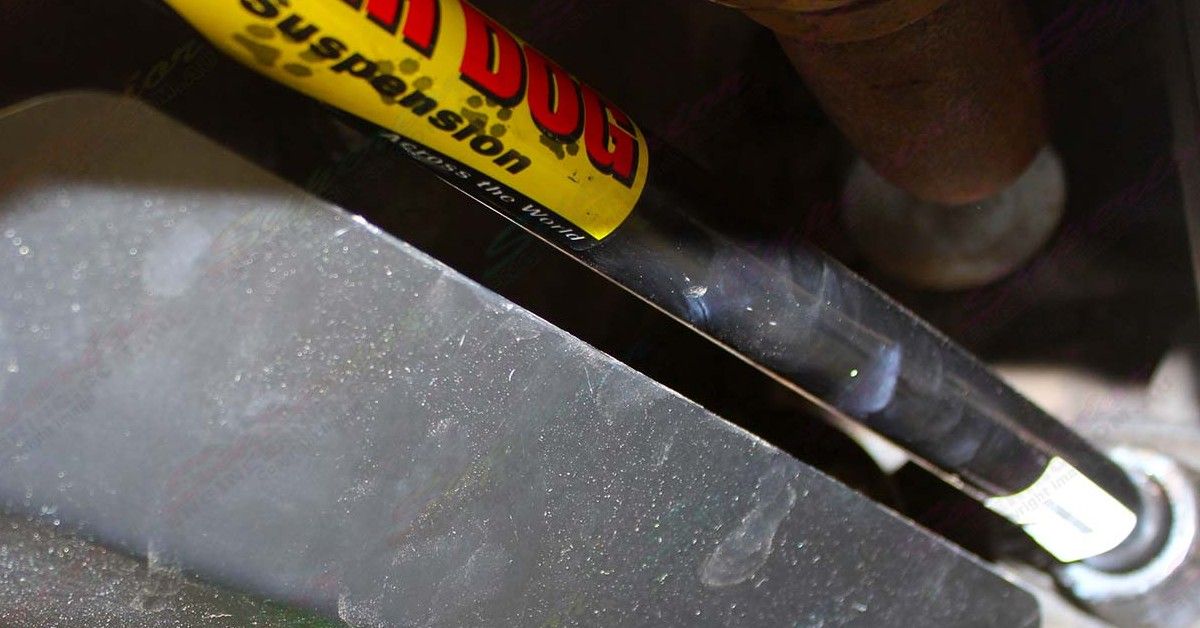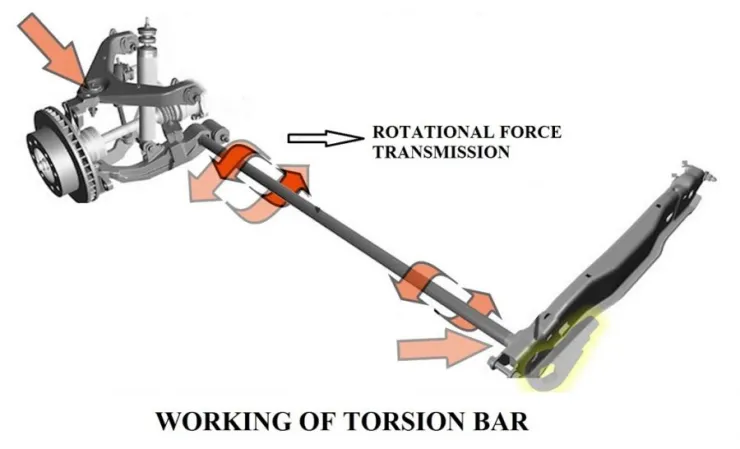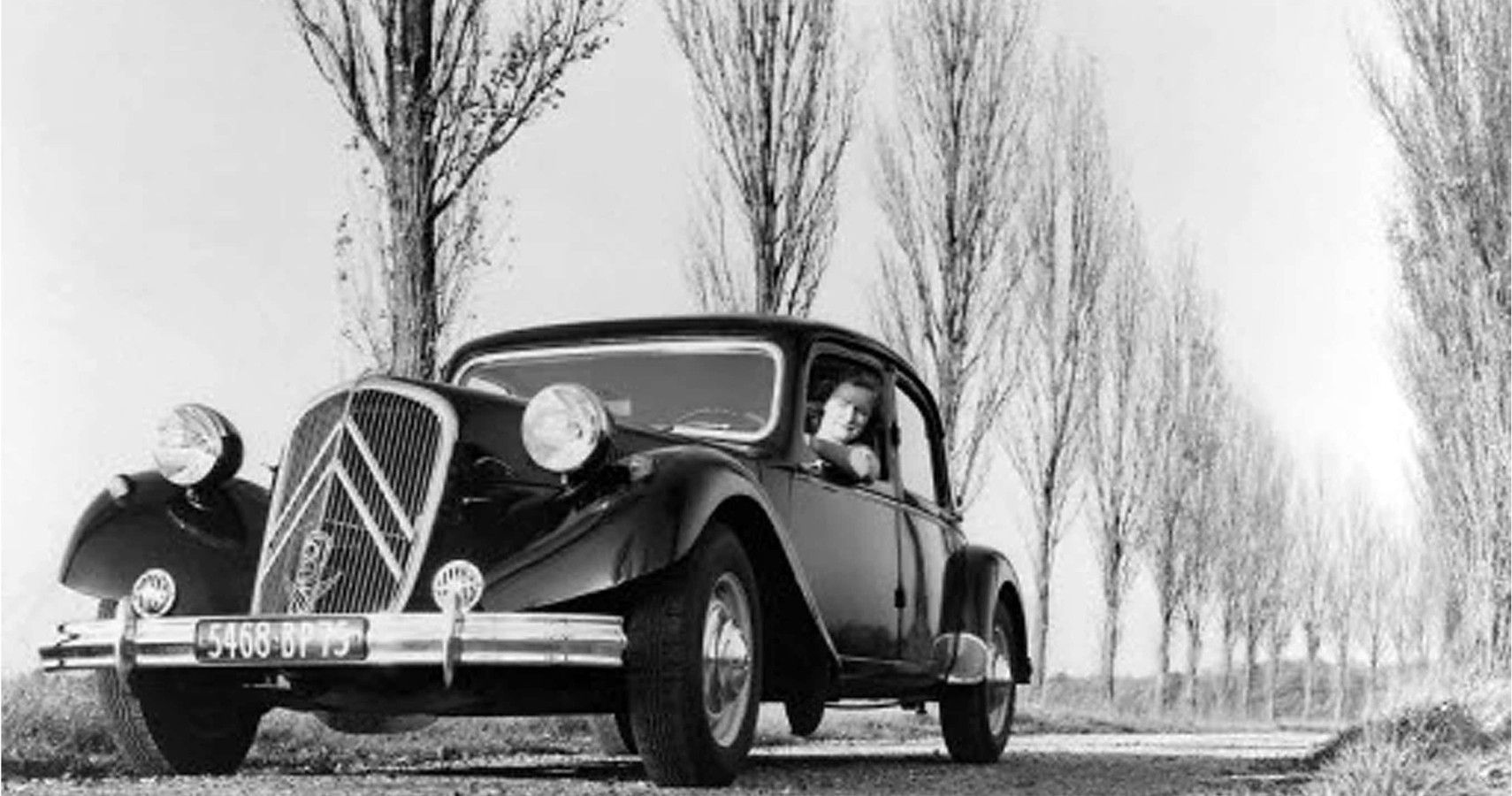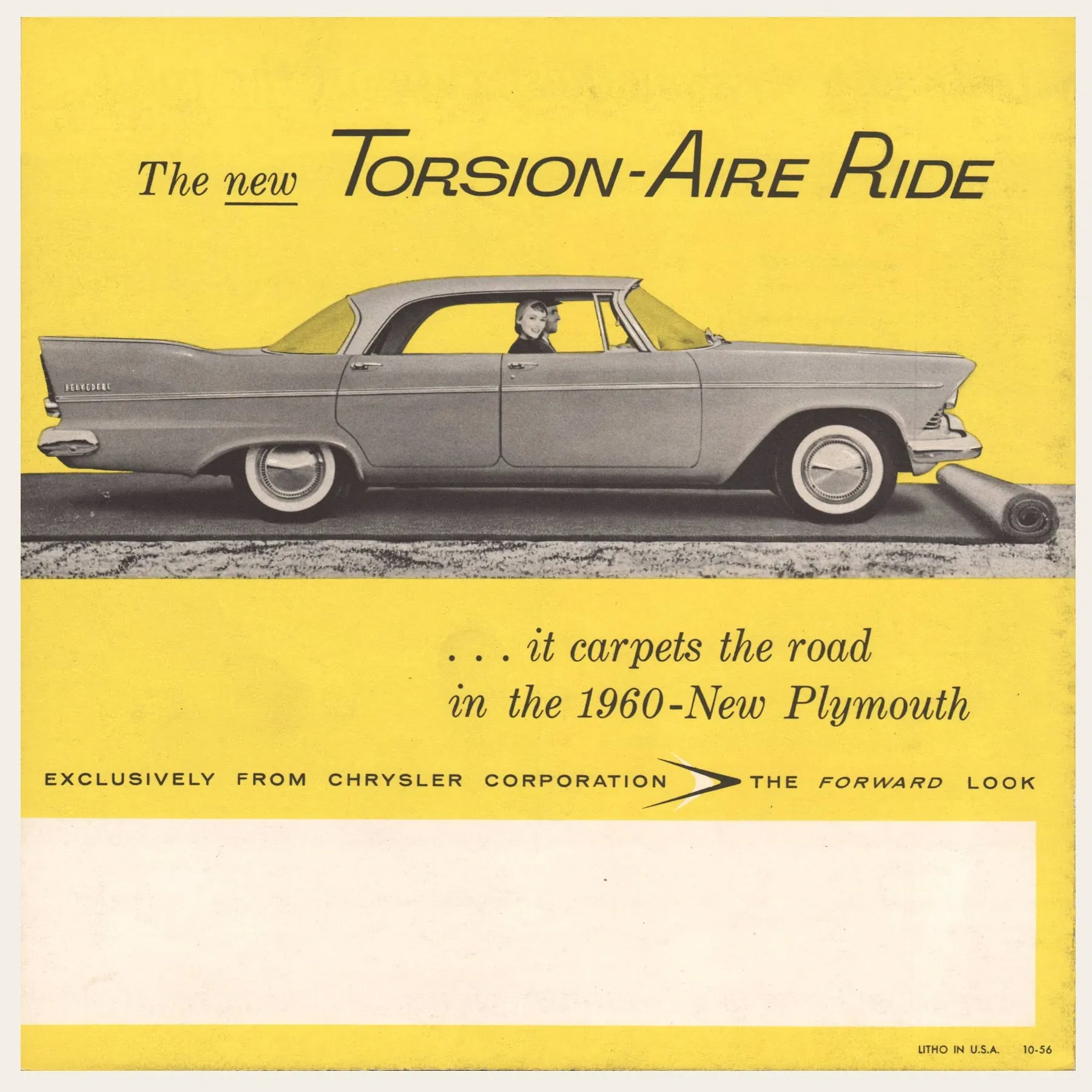In its heyday the torsion bar was favored in vehicles where comfort was prioritized over dynamic handling, pretty much every version of the coil-sprung suspension has overtaken torsion bars in this respect. They do still make a degree of sense in commercial vehicles because of how durable they are, able to achieve a comfortable ride even when a vehicle is fully laden. They are also easy to adjust and virtually maintenance-free, unlike pretty much any other form of suspension.
Basic Operation Of The Torsion Bar Suspension
In simple terms, all the torsion bar suspension (not to be confused with the torsion-beam suspension) consists of two metal bars made of spring steel that take the place of springs in the suspension.
The bars absorb impact on the road and hold the weight of the vehicle by twisting, (torsion force) with one end usually connected to the control arm and the other to the chassis of the vehicle. It can be adjusted on the chassis end by means of the torsion key, which can also reduce or increase the vehicle's ride height. Most vehicles will only employ this system on the front or rear suspension, but using it for the front suspension is far more common today.
A Brief History Of The Torsion Bar Suspension
Although the technology was around before the second world war, with Citroën introducing it to the world with their Traction Avant, it only truly found its way into mainstream use by the 50s.
Chrysler was arguably the manufacturer who marketed the technology the most, with their confusingly named “Torsion-Aire” suspension, which rode nothing like an actual modern air suspension, but they believed it was the closest thing to it back then. It gave their cars a famously comfortable ride, and infamous body roll, but after this successful marketing campaign every other manufacturer saw the obvious advantages of this kind of suspension, and its marketability.
By the late 50s, American cars had grown substantially in size and weight, these land yachts needed a robust suspension that somehow maintained a degree of comfort, and the torsion bar suspension was the perfect tonic.
Advantages And Disadvantages Of The Torsion Bar Suspension
The Torsion bar became the go-to suspension for American carmakers for that very reason, it gave cars a sofa-like ride.
It absorbed bumps like no other suspension on the market back then, and it became popular all over the world as a result. Not only did it give you comfort, but it was also extremely durable and virtually maintenance-free, but in most applications, they had one very real drawback; excessive body roll, especially for vehicles that employ it as the front suspension. Some sporty cars made use of variants of the torsion bar at the rear, but over time they too would be phased out in favor of independent coil-sprung suspension that can now offer just as much comfort with far superior handling characteristics.
Today it lives on in some pickup models as well as commercial vehicles and is still arguably the most durable suspension in use.




